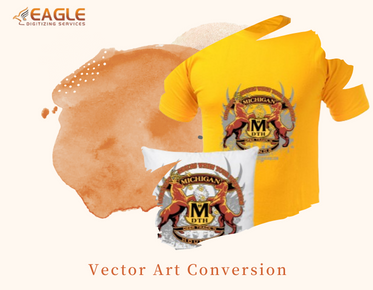Introduction to Common Vector Formats and Their Uses
In the realm of digital design, vector formats play a pivotal role in ensuring that graphics are scalable, editable, and maintain high quality across various platforms. Understanding these formats is crucial for designers, marketers, and anyone involved in digital content creation. In this blog, we will delve into the most common vector formats, their unique characteristics, and their practical applications. Whether you're a seasoned designer or a newcomer to the field, this guide will provide valuable insights into the world of vector graphics. For more detailed information on vector images, you can visit this resource.
What Are Vector Graphics?
Vector graphics are images created using mathematical formulas rather than individual pixels. This allows them to be infinitely scaled without losing quality, making them ideal for logos, illustrations, and any design that requires resizing. Unlike raster images, which can become pixelated when enlarged, vector graphics maintain their crispness and clarity.
Key Characteristics of Vector Graphics
Vector graphics are defined by paths, which are determined by a start and end point, along with other points, curves, and angles. These paths can be filled with colors, gradients, or patterns, offering a wide range of design possibilities. The scalability and editability of vector graphics make them a preferred choice for various applications, from print media to digital interfaces.
Common Vector Formats
Several vector formats are widely used in the design industry, each with its own set of features and compatibility considerations. Here are some of the most common ones:
1. SVG (Scalable Vector Graphics)
SVG is a web-friendly vector format that is widely supported by modern browsers. It is ideal for web design because it allows for interactive and animated graphics. SVG files are text-based, which means they can be easily edited with a text editor and compressed for faster loading times.
2. AI (Adobe Illustrator)
AI is the native format for Adobe Illustrator, a leading vector graphics editor. It is widely used by professional designers for creating complex illustrations and designs. AI files can be exported to other formats, such as PDF and EPS, for broader compatibility.
3. EPS (Encapsulated PostScript)
EPS is a versatile vector format that is compatible with various design software. It is often used for printing purposes because it can contain both vector and raster elements. EPS files are ideal for logos and other designs that require high-quality printing.
4. PDF (Portable Document Format)
While PDF is primarily known as a document format, it can also contain vector graphics. PDFs are widely used for sharing designs because they preserve the layout and quality of the original file. They are compatible with most devices and can be easily viewed and printed.
Uses of Vector Formats
Vector formats are used in a wide range of applications, from branding and marketing to web design and animation. Here are some common uses:
Branding and Logos
Logos are often created in vector formats to ensure they can be scaled to any size without losing quality. This is essential for maintaining brand consistency across different media, from business cards to billboards.
Print Media
Vector graphics are ideal for print media because they provide high-quality output. Whether it's brochures, posters, or packaging, vector formats ensure that designs look sharp and professional.
Web Design
In web design, vector graphics are used for icons, illustrations, and animations. Formats like SVG are particularly useful because they are lightweight and can be easily manipulated with CSS and JavaScript.
Animation
Vector graphics are also used in animation, where scalability and editability are crucial. Software like Adobe Animate and After Effects utilize vector formats to create smooth and dynamic animations.
Choosing the Right Vector Format
When choosing a vector format, consider the intended use and compatibility requirements. For web design, SVG is often the best choice due to its browser support and flexibility. For print, EPS and PDF are preferred for their high-quality output. Adobe Illustrator's AI format is ideal for complex designs that require extensive editing.
Future Trends in Vector Graphics
As technology advances, vector graphics continue to evolve. The integration of AI and machine learning in design software is opening new possibilities for creating and manipulating vector graphics. Additionally, the rise of virtual and augmented reality is driving demand for scalable and interactive graphics, further solidifying the importance of vector formats in the digital landscape.
For those looking to enhance their design capabilities, exploring the various vector formats and their applications is a worthwhile endeavor. As the digital world continues to expand, the ability to create and manipulate vector graphics will remain a valuable skill. Eagle Digitizing excels in delivering professional vector art services, transforming creative visions into scalable designs.


.png)
